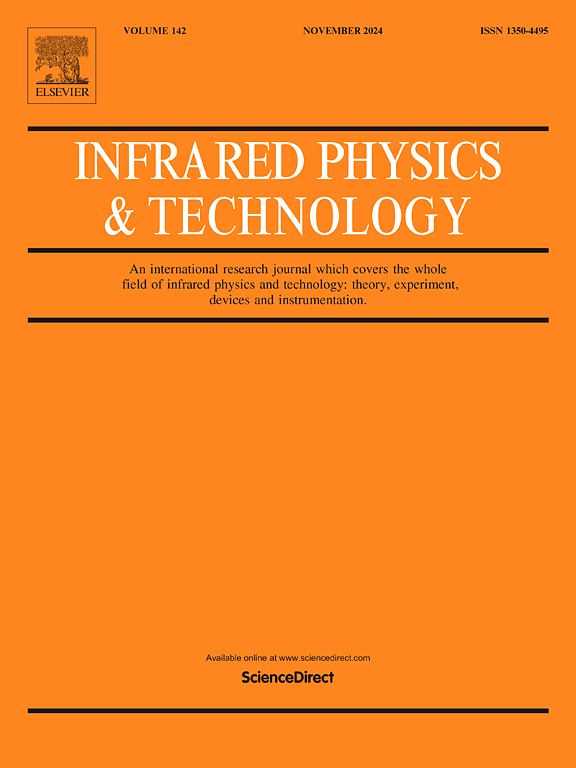利用傅里叶红外光谱的一维卷积神经网络测量复合塑料薄膜的厚度
IF 3.1
3区 物理与天体物理
Q2 INSTRUMENTS & INSTRUMENTATION
引用次数: 0
摘要
多层复合薄膜由于其独特的性能和功能,在各种工业和应用中得到了广泛的应用。精确控制每一层的厚度,确保每一层都能达到理想的属性。本研究提出了一种基于一维卷积神经网络(1D-CNN)的光谱数据分析方法,将五种不同厚度组合的塑料薄膜进行组装,并用FTIR进行测量,为1D-CNN建模提供数据集。与偏最小二乘(PLS)和全连接神经网络(FCNN)模型相比,1D-CNN模型具有更好的厚度预测精度,其各自的均方根误差(RMSE)值从<;9.11 μm to <;0.31 μm,膜厚13 ~ 270 μm。利用梯度加权类激活映射(gradient weighted class activation mapping, Grad-CAM)方法对所建立的回归模型进行可视化,对重要波数进行详细分析和选择,以构建更紧凑的1D-CNN模型。总之,这些结果表明,所提出的光谱1D-CNN技术可以快速准确地测量复合塑料薄膜中组分的厚度,并且具有提高效率和降低光谱定量应用中仪器和计算成本的潜力。本文章由计算机程序翻译,如有差异,请以英文原文为准。
Using a one-dimensional convolutional neural network on FTIR spectroscopy to measure the thickness of composite plastic films
Multilayer composite films have gained widespread application across a variety of industries and applications due to their unique properties and functionalities. The precise control of the thickness of each layer ensures that every layer contributes optimally to the desired attributes. In this study, a method using a one-dimensional convolutional neural network (1D-CNN) was developed to analyze the spectral data, five kinds of plastic films were assembled with different thickness combinations and measured with FTIR, which provided the data sets for 1D-CNN modeling. Compared to partial least squares (PLS) and fully connected neural network (FCNN) models, the 1D-CNN model performs better in accuracy of the thickness prediction, with respective root mean square error () values dropping from < 9.11 μm to < 0.31 μm for film thickness of 13–270 μm. The developed regression model was visualized using the gradient weighted class activation mapping (Grad-CAM) method for detailed analysis and selection of significant wavenumbers in order to build a more compact 1D-CNN model. Altogether, these results show that the proposed spectral 1D-CNN technique can measure the thickness of components in composite plastic films rapidly and accurately, and has the potential to improve efficiency and reduce the cost of instruments and calculations for spectral quantitation applications.
求助全文
通过发布文献求助,成功后即可免费获取论文全文。
去求助
来源期刊
CiteScore
5.70
自引率
12.10%
发文量
400
审稿时长
67 days
期刊介绍:
The Journal covers the entire field of infrared physics and technology: theory, experiment, application, devices and instrumentation. Infrared'' is defined as covering the near, mid and far infrared (terahertz) regions from 0.75um (750nm) to 1mm (300GHz.) Submissions in the 300GHz to 100GHz region may be accepted at the editors discretion if their content is relevant to shorter wavelengths. Submissions must be primarily concerned with and directly relevant to this spectral region.
Its core topics can be summarized as the generation, propagation and detection, of infrared radiation; the associated optics, materials and devices; and its use in all fields of science, industry, engineering and medicine.
Infrared techniques occur in many different fields, notably spectroscopy and interferometry; material characterization and processing; atmospheric physics, astronomy and space research. Scientific aspects include lasers, quantum optics, quantum electronics, image processing and semiconductor physics. Some important applications are medical diagnostics and treatment, industrial inspection and environmental monitoring.

 求助内容:
求助内容: 应助结果提醒方式:
应助结果提醒方式:


